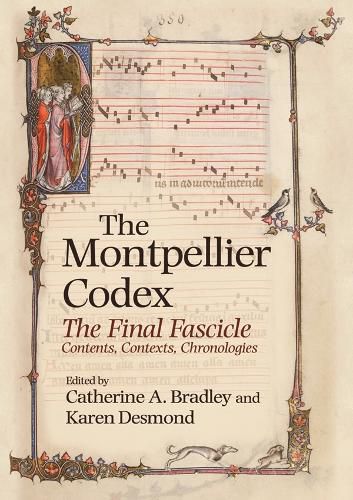The Montpellier Codex (Bibliotheque interuniversitaire, Section Medecine, H.196) occupies a central place in scholarship on medieval music. This small book, packed with gorgeous gold leaf illuminations, historiated initials, and exquisite music calligraphy, is one of the most famous of all surviving music manuscripts, fundamental to understandings of the development of thirteenth- and fourteenth-century polyphonic composition. At some point in its historyan eighth section (fascicle) of 48 folios was appended to the codex: when and why this happened has long perplexed scholars. The forty-three works contained in the manuscript’s final section represent a collection of musical compositions, assembled at a complex moment of historical change, straddling the historiographical juncture between the thirteenth and fourteenth centuries. This book provides the first in-depth exploration of the contents and contexts of the Montpellier Codex’s final fascicle. It explores the manuscript’s production, dating, function, and notation, offering close-readings of individual works, which illuminate compositionally progressive features of therepertoire as well as its interactions with existing musical and poetic traditions, from a variety of perspectives: thirteenth- and fourteenth-century music, art history, and manuscript culture. CATHERINE A. BRADLEY isan Associate Professor at the University of Oslo; KAREN DESMOND is Assistant Professor of Music at Brandeis University. Contributors: Rebecca A. Baltzer, Edward Breen, Sean Curran, Rachel Davies, Margaret Dobby, Mark Everist, Solomon Guhl-Miller, Anna Kathryn Grau, Oliver Huck, Anne Ibos-Auge, Eva M. Maschke, David Maw, Dolores Pesce, Alison Stones, Mary Wolinski
Read More





